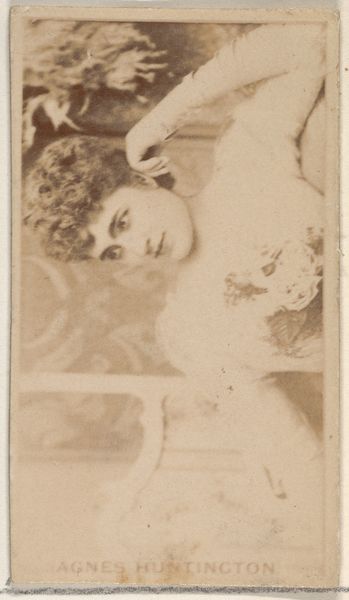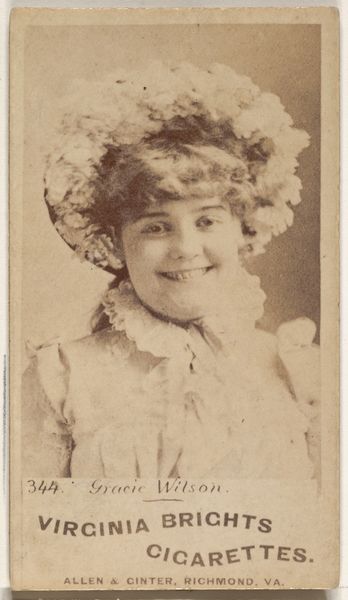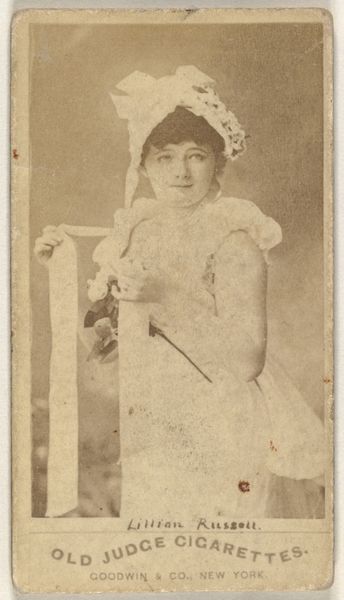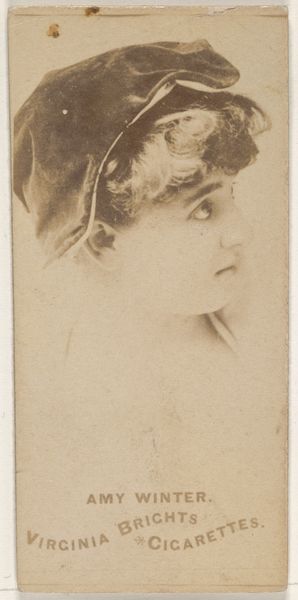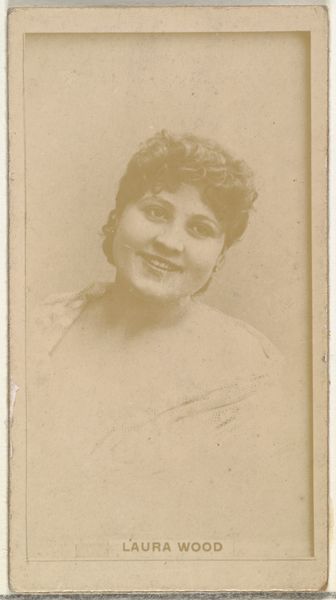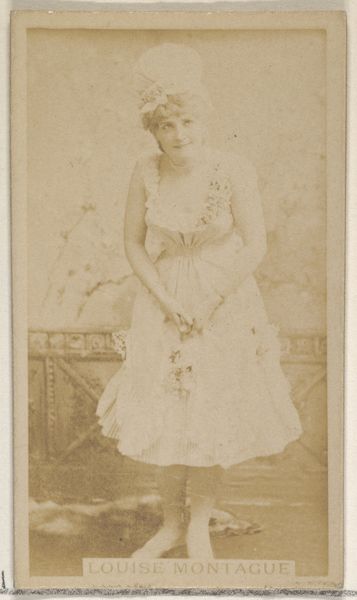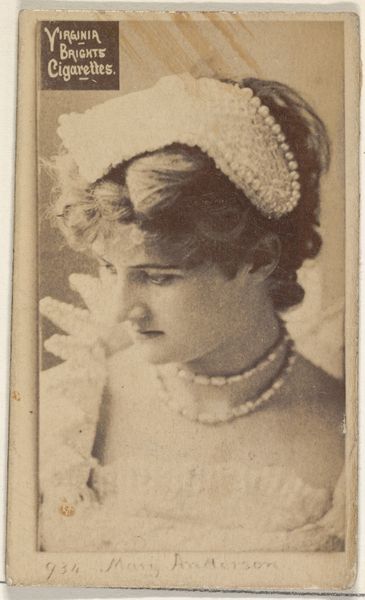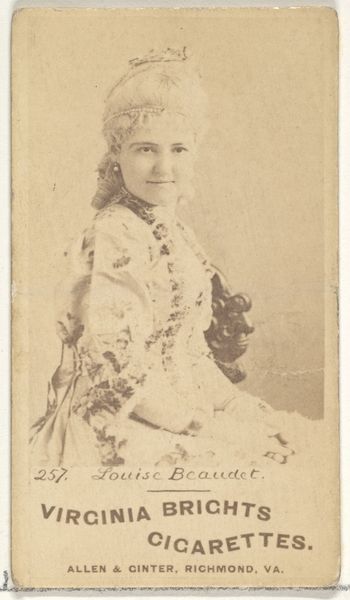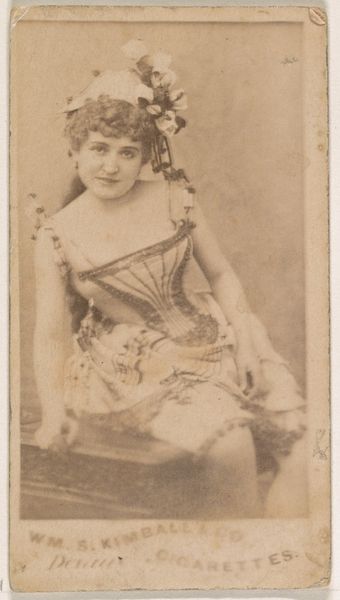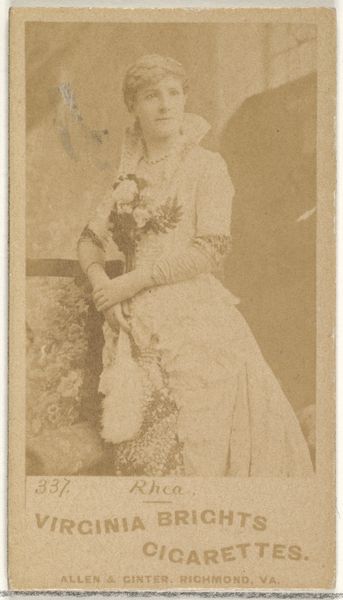
Card 430, Minnie Palmer, from the Actors and Actresses series (N45, Type 1) for Virginia Brights Cigarettes 1885 - 1891
0:00
0:00
drawing, print, photography
#
portrait
#
drawing
# print
#
charcoal drawing
#
photography
#
coloured pencil
Dimensions: Sheet: 2 3/4 x 1 3/8 in. (7 x 3.5 cm)
Copyright: Public Domain
Curator: At first glance, the image reads like a vintage photograph, soft focus and sepia tones, presenting a woman with an engaging half-smile. It is, in fact, a card from the Actors and Actresses series, specifically "Card 430, Minnie Palmer" produced for Virginia Brights Cigarettes around 1885-1891. Editor: It's incredible how an item designed for mass consumption also acts as a window into the Gilded Age, an interesting collision of art, advertising, and celebrity culture! I see how the texture from the print and potential hand-coloring adds layers of information beyond the image itself. Curator: Exactly. Allen & Ginter, the producers, aimed for a particular type of consumer. Consider how the manufacturing and distribution of such cards reflect the industrial expansion and advertising strategies of the time. Editor: And how these strategies shaped the image of femininity for public consumption. Minnie Palmer is presented in this idealized, almost saccharine fashion, indicative of prevailing social attitudes toward women in the entertainment industry. Were these cards exclusively for a male demographic, solidifying certain performative standards? Curator: That’s a great question! While tobacco consumption wasn't gender exclusive, the marketing probably was, reinforcing the patriarchal structures in place. These weren’t intended as “high art,” they were inserts meant to protect cigarette packs that incidentally celebrated actors. They made art accessible at a mass level. The interplay between craft and commercialism is fascinating. Editor: Indeed! The card isn't just an image, but also a piece of cultural ephemera. The photograph, transformed through the printing press, and sold along with cigarettes, becomes embedded within social narratives and the construction of fame at that time. It raises the question of who profits from such commercial depictions. Curator: And the implications of these processes on the actress herself. It reveals how labor and artistic mediums transform a portrait into a commodity, altering her public persona. Considering the context—labor, materials, celebrity culture, commercialism—it's pretty rich in content. Editor: Seeing this portrait card provides us with a small but important reminder of a complex period when social trends and popular culture combined and intermingled to construct images with powerful public and political implications. It really reveals so much about art, commerce, and gender in the late 19th century.
Comments
No comments
Be the first to comment and join the conversation on the ultimate creative platform.
